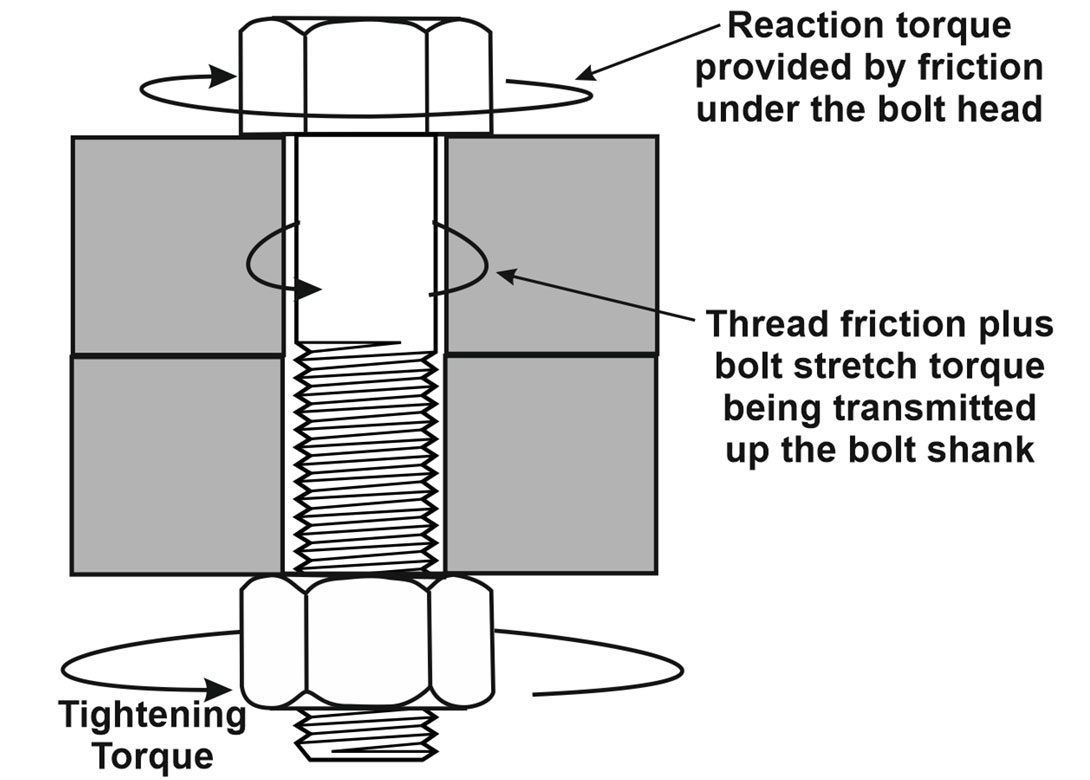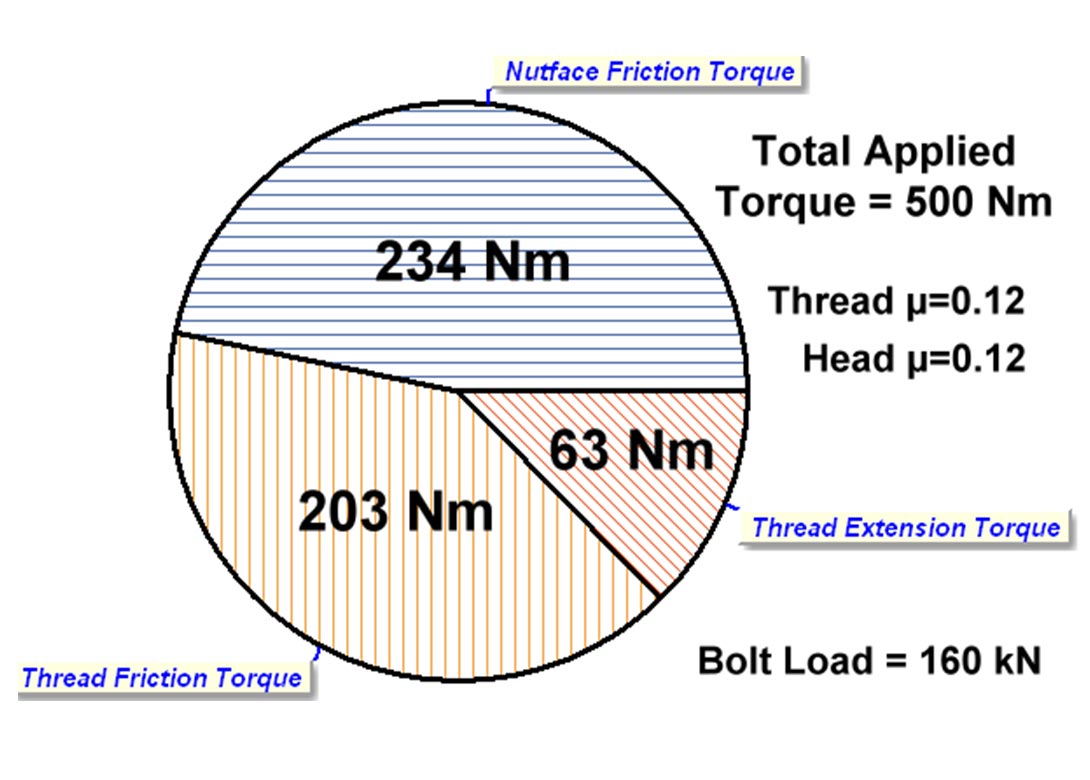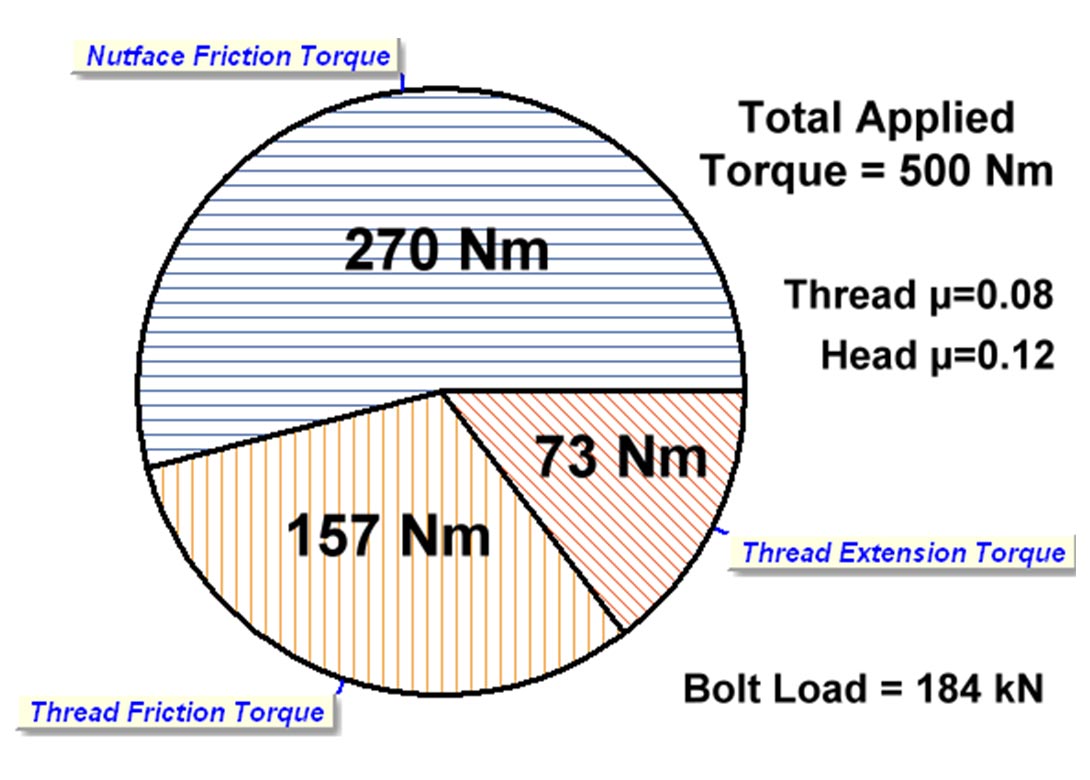
Here Bill Eccles, from Bolt Science, looks at when a back-up wrench is needed for the installation of bolt and nut assemblies and when it is not.
A back-up wrench or spanner is placed on a bolt head to prevent bolt rotation when the nut is being tightened. Once the bolt is tightened, and the nut is then attempted to be tightened, the whole nut-bolt assembly can spin without further tightening occurring at a torque lower than the initial tightening torque. The concern sometimes expressed is whether or not this is a problem?
When a nut is tightened, the torque applied to the nut can be split into three components: The torque needed to stretch the bolt (the thread extension torque); the torque needed to overcome thread friction; and the torque needed to overcome nut face friction. The torque needed to stretch the bolt and the torque needed to overcome thread friction is transmitted through the bolt shank and is reacted by the bolt head. Whether a backing spanner is needed depends upon whether the torque needed to rotate the bolt head is greater than the torque being transmitted up the bolt shank. This torque is the sum of the torque needed to stretch the bolt plus the torque needed to overcome thread friction. If the reaction torque provided by friction grip of the bolt head on the joint surface is greater than the torque being transmitted up the shank, then the bolt will not rotate and the nut would tighten the assembly.
This is illustrated in the image below. If the reaction torque is less than the torque is being transmitted up the bolt shank, rotation of the whole bolt-nut assembly would occur. A back-up wrench would then be needed for the nut to be tightened.

Consider the situation in which an M20 property class 10.9 bolt is tightened to 500Nm. The coefficient of friction under the nut face and in the thread is 0.12. Such a torque and friction combination would result in a bolt load of 160kN. Below is a pie-chart showing this situation.

If the friction condition under the bolt head is the same as under the nut face, in the above case, a backing spanner would be needed to prevent the bolt head from rotating. This is because the torque needed to overcome thread friction (203Nm) plus the torque needed to stretch the bolt (63Nm) is greater than the torque that the bolt head is capable of reacting (234Nm). In this case to tighten the nut, a backing spanner would be needed to prevent the bolt from rotating. The backing spanner would react a torque of 266 – 234 = 32 Nm. Once the bolt was fully tightened to the 500 Nm the backing spanner could be released.
Assuming there was no change in the friction conditions, if the nut was then attempted to be tightened without the backing spanner, the whole nut-bolt assembly would rotate at a torque of 468 Nm. (Since both the nut face and bolt head would rotate needing a torque of 234 Nm each.) Being able to rotate the nut-bolt assembly at a lower torque than the tightening torque does not indicate that there is necessarily a problem with the assembly. If the thread friction is decreased from 0.12 to 0.08, maybe through the use of a lubricant being applied to just the thread, with the nut face and bolt head friction stopping at 0.12, there will be a change in the torque distribution. Also, the decrease in the thread friction would increase the bolt load that a torque of 500Nm would provide, raising it to 184kN. Below is a pie-chart showing this situation.

In this case, the bolt head friction would be 270Nm (which has increased since the bolt load increased). The bolt head torque is now greater than the thread friction torque (157Nm) plus the torque needed to stretch the bolt (73Nm). Accordingly, once tightening is started, a backing spanner would not be needed. Also, attempts to rotate the nut-bolt assembly in the tightening direction once tightening is completed would result in the bolt being further tightened. To do this, a torque of over 500Nm would be needed.
If a lubricant is being used and the nut is to be rotated, it is normal practice to apply the lubricant to the nut face and to the bolt thread region in contact with the nut threads. Lubricant is not applied to the bearing face of the bolt head. Accordingly, the torque needed to rotate the bolt head typically will be greater than that needed to overcome thread friction and the thread extension torque. Hence once tightening begins a backing spanner is not needed.
For large bolts the back-up wrench or spanner used to prevent rotation can become jammed on the joint surface since the reaction torque is high. A hammer or similar, is then needed to release the wrench. To overcome this issue, release-assisted back-up wrenches have been developed. Such wrenches typically have a screw on the back-up wrench that can be rotated to release the reaction torque safely.





